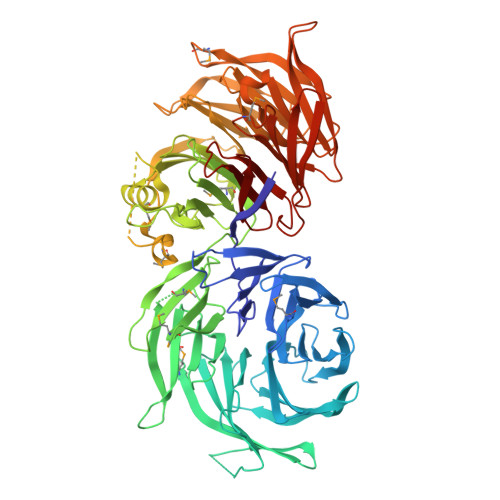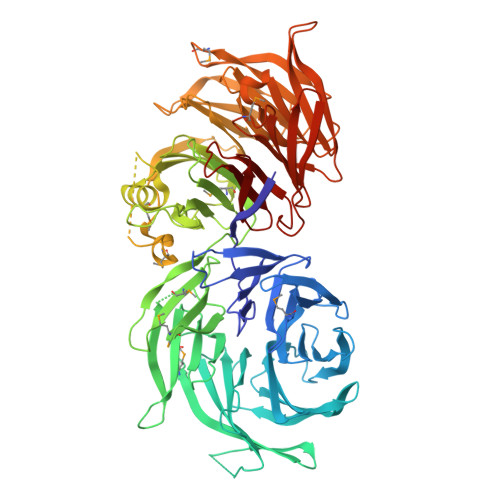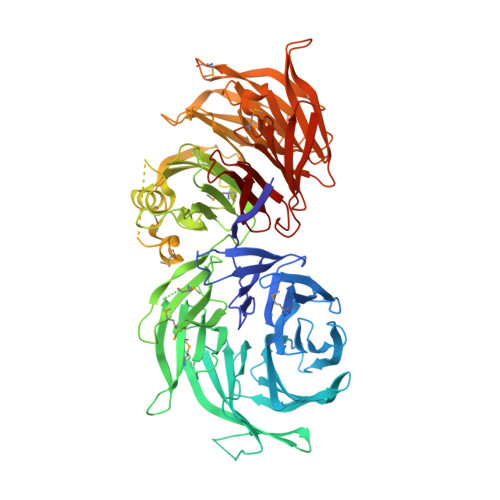Architecture of the yeast Elongator complex.
Dauden, M.I., Kosinski, J., Kolaj-Robin, O., Desfosses, A., Ori, A., Faux, C., Hoffmann, N.A., Onuma, O.F., Breunig, K.D., Beck, M., Sachse, C., Seraphin, B., Glatt, S., Muller, C.W.(2017) EMBO Rep 18: 264-279
- PubMed: 27974378
- DOI: https://doi.org/10.15252/embr.201643353
- Primary Citation of Related Structures:
5M2N - PubMed Abstract:
The highly conserved eukaryotic Elongator complex performs specific chemical modifications on wobble base uridines of tRNAs, which are essential for proteome stability and homeostasis. The complex is formed by six individual subunits (Elp1-6) that are all equally important for its tRNA modification activity. However, its overall architecture and the detailed reaction mechanism remain elusive. Here, we report the structures of the fully assembled yeast Elongator and the Elp123 sub-complex solved by an integrative structure determination approach showing that two copies of the Elp1, Elp2, and Elp3 subunits form a two-lobed scaffold, which binds Elp456 asymmetrically. Our topological models are consistent with previous studies on individual subunits and further validated by complementary biochemical analyses. Our study provides a structural framework on how the tRNA modification activity is carried out by Elongator.
Organizational Affiliation:
European Molecular Biology Laboratory, Structural and Computational Biology Unit, Heidelberg, Germany.



















